Sow the Seed:Aboriginal Agriculture
Australian Aborigines have been labelled as hunters and gatherers for 220 years but pioneers and explorers saw a very different economy. Aborigines were growing and harvesting a huge variety of grains, tubers and fruits as well as building large and complex aquaculture systems. Let’s rediscover the observations of Australian explorers Sturt, Mitchell, Grey, Batey and others.
An indication of how much we can learn is shown in the map below. Norman Tindale documented Aboriginal grain harvests over most of the Australian continent but contemporary grain areas make up less than a quarter of that area. What might happen if we explore those traditional grains and how they were grown in areas we now call desert?
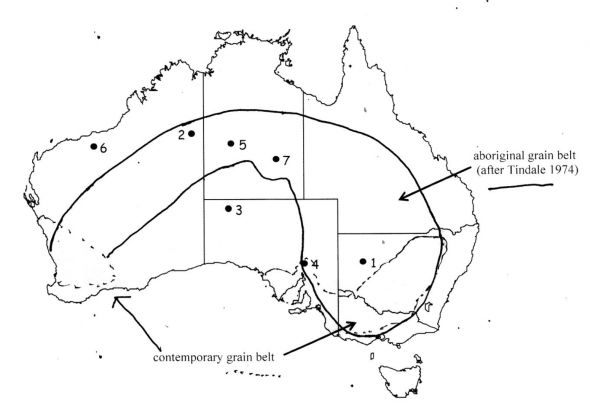
1. Aboriginal grain belt
Aboriginal communities are reaching back into their history to re-discover the traditional foods, growing methods and recipes. At Lake Mungo in October Barkinji, Latchi Latchi and Mutti Mutti people baked bread from one of their traditional grains, panicum decompositum. When the loaves came out of the oven the tears flowed. It was two hundred years since this bread had been baked. It was a threshold moment.
We have begun growing a variety of these grains on ground that has been loaned to us by supporters. We are growing murnong or yam daisy (Microseris lanceolata), cumbungi (bulrush), warrigal greens, lilies and orchids. Experiments have begun with beverages made from daisy bush and saltbush and banksia flowers.
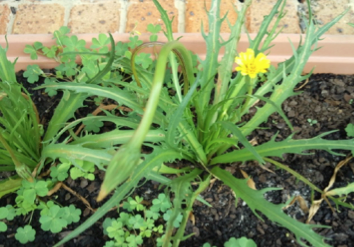 2. Murnong flowering (yam daisy)
2. Murnong flowering (yam daisy) 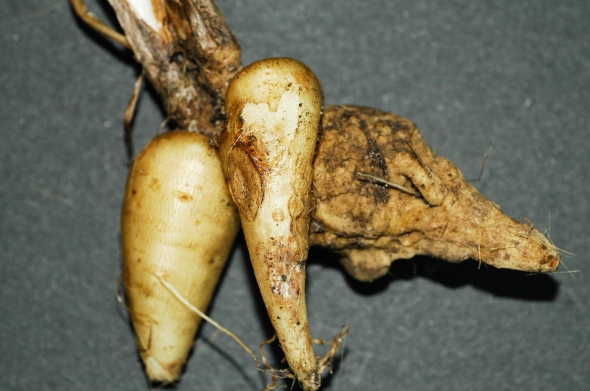 3. Harvested Murnong tuber (yam daisy)
3. Harvested Murnong tuber (yam daisy)What is Gurandgi Munjie?
Over the last four years we have been propagating murnong (yam daisy) to supply seed for all our trial plots. Everything we’ve done from soil type, planting mode, harvest rates and season have been put together in an extensive document and represent one of the most significant research studies ever done on the plant. We are in debt to Beth Gott at Monash University but otherwise there is very little available material on this wonderful vegetable. During the time of the study we’ve been sharing information and seed with other yam enthusiasts. It seems Australia is on the brink of burgeoning interest in traditional horticulture.
In the spring of 2015 we’ve had our best seed harvest and consequently have four field plantings of murrnong for the first time. We are close to regenerating the traditional methods where murnong, lilies, orchids and moss grew in companionship. The method sweetens and improves the tilth of the soil. Our plants respond to cultivation and reveal the extent of the domestication Aboriginal people imparted. This is an important and unknown element for Australian history but it also holds enormous significance for Australian food production and environmental protection.
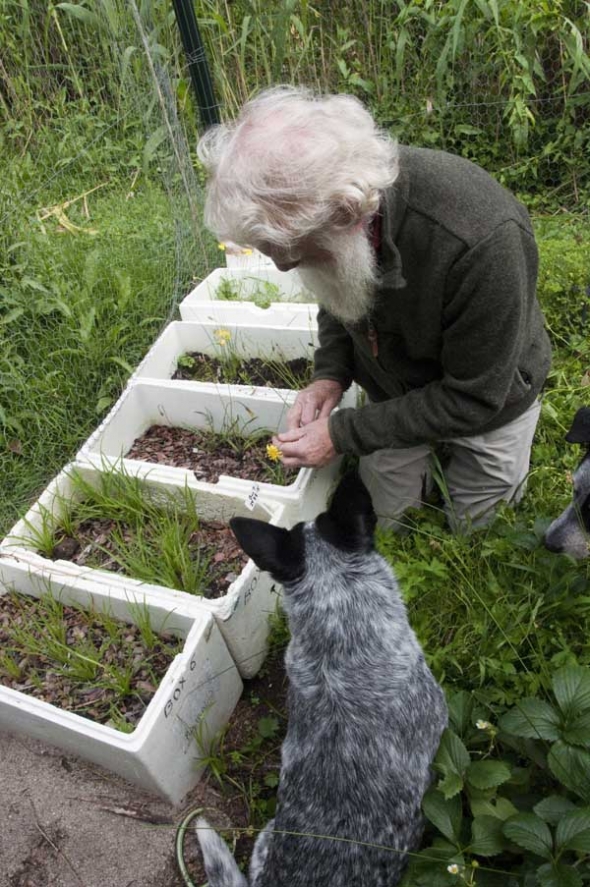
4. Some Murnong trials with a little help from a friend.
How The Funds Will Be Used
Establishment Budget
So far we have been supported by the donation of labour from Yuin people and a small seeding grant from Local Land Services.
In order to secure the future of the program we need:
Green houses x 2 $3000
Irrigation systems 2 x $2500
Employment (2 employees x 6months)
$50,000
Travel expenses $3000
Total: $58,500
We are aiming to raise $25000 through crowd funding and the rest will come from the Local Land Services seed fund.
Care for Country
All our employees will work with elders who have already donated their time for four years. The importance of having the elders involved is that it allows us to induct the young Yuin people in Lore. The story of the ground and climate and plants has an historical cultural foundation which is intrinsic to the care of country.
The company runs on traditional principles which far from being archaic relics have proven themselves to be excellent business protocols.
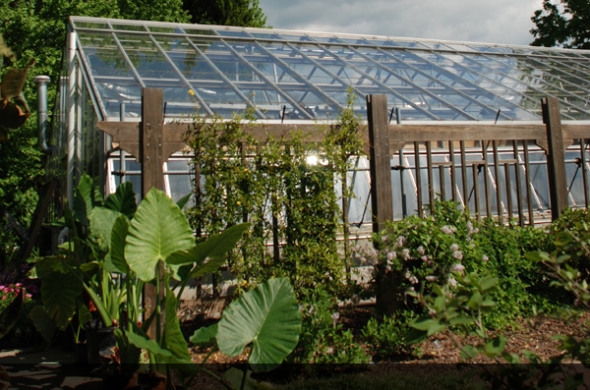
6. Green house - Our dream house. One of the essential elements of the farm program would be 2 basic greenhouses to ensure growth can occur all year round.
The Challenges
*We need a greenhouse, a shade house and a small storage shed.
*Transfer the murnong (yam daisy) production from its four year trial locations to field plots at Brogo.
*Begin supply of foods, in the first instance to Cobargo Wholefoods.
*Engage young local Yuin people to begin the project under directorship of volunteer elders.
*Eradicate weeds in the fenced plots by the use of pigs.
*Remove and sell pigs and then cultivate the plots and ensure full weed eradication.
*Begin trials of up to ten other plants in order to learn the properties and horticultural requirements of each with a view to seed and seedling production.
*Begin sales.
*Refine the structure of the food company and staff career paths.
*Establish education and training pathways.
*Build a program to ensure financial viability for the future.
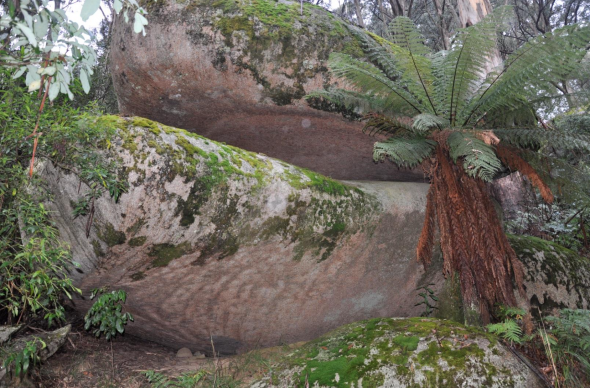
5. These rocks show evidence of grinding of grains 30000 thousand of years ago, our project endeavours to see Aboriginal agricultural once again harvest and grind indigenous grains to eat.
Friend of Gurandgi Munjie
Email of thanks from Gurandji Munjie. Like us on Facebook to stay in touch with this amazing project.
Community Supporter
Donors will receive the annual newsletter for free. Stay in touch by liking this amazing project Gurandgi Munjie on Facebook.
Earth Community Member
$100 donors receive annual newsletter and a copy of the novel, Earth (Magabala) by Bruce Pascoe.
Ocean Community Member
Donors receive annual newsletter, a packet of murnong (yam daisy) seeds and a copy of Ocean (Magabala) by Bruce Pascoe.
Dark Emu Community Member
$1000 donors will receive annual membership, a copy of Dark Emu (Magabala) the story of aboriginal agriculture, a copy of Earth and a packet of murnong (yam daisy) seeds. (free shipping). Also know that you have seriously helped this project, which will in turn help the environment and sustainable agriculture in this country.